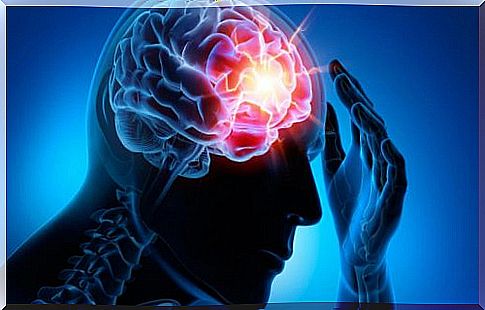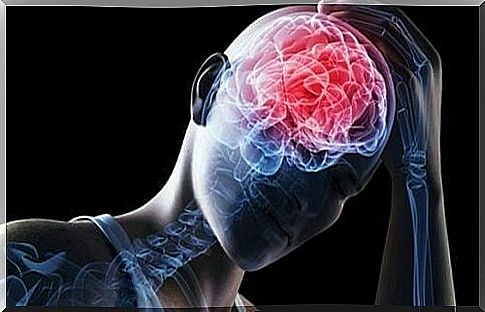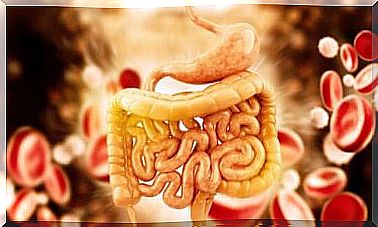The 4 Most Common Cerebrovascular Diseases You Should Know
Cerebrovascular diseases (CVD) refers to all those problems related to a difficult circulation of the blood temporarily or permanently in a concrete area of our brain.

There are many cerebrovascular diseases that do not have specific symptoms. This is why it is essential to carry out regular consultations and adopt healthy lifestyle habits to avoid complications.
Cerebrovascular disease (CVD) refers to all of those problems related to temporarily or permanently difficult blood flow in a specific area of our brain.
Explanations
We all know, directly or indirectly, someone who has suffered from a stroke, an aneurysm or a small brain effusion.
All these diseases can leave us with permanent consequences or even kill us.
At best, it will be more fear than harm, but we will have to improve our lifestyle.
Likewise, it should also be pointed out that the majority of us are not sufficiently aware of these diseases.
Unless we have had one of these experiences around us, we usually do not give enough importance to the impact of blood pressure, high cholesterol or being overweight on brain health.
Much of the deaths that occur each year from cerebrovascular disease could be prevented.
The rest, like the strokes that affect patients who are still very young or people who take great care of their lifestyle, are realities that still escape our understanding or even our logic.
Anyway, we must improve prevention, submit to periodic consultations to measure, for example, our blood pressure in order to reduce mortality.
Find out which cerebrovascular diseases to watch out for.
The 4 most common cerebrovascular diseases
As we noted initially, all cerebrovascular disease arises because of a problem with the blood flow.
Also, any problem in the blood flow can cause two types of diseases: ischemic and hemorrhagic.
It should be noted that ischemia are, without a doubt, the most frequent and the majority of them have the same origin: arteriosclerosis.
We have already told you many times about arteriosclerosis: it occurs when cholesterol levels are very high and there is inflammation of the arteries in the brain.
All of this leads to a slow, progressive and very debilitating disease: the build-up of plaque in the blood vessels.
This causes problems with blood flow to the brain and, in the long run, can cause cognitive problems and dementia.
We are not faced with something light, which we can ignore: prevention and the good habits of life that we practice today will be noticed tomorrow.
-
Cerebral thrombosis
- Thrombosis is an ischemic stroke.
- The strokes, in 80% of cases, have the same origin.
- It occurs after one of the arteries in the brain narrows due to the appearance of a thrombus that blocks blood flow.
In general, there are symptoms to be aware of before the occurrence of cerebral thrombosis:
- Numbness in one part of the face or one side of the body.
- Very intense headache.
- Difficulties in communicating and understanding.
- Nausea and problems walking.
- Vision problems.
2. Cerebral embolism

Another type of ischemic stroke is cerebral embolism. But if in the previous case we had a “thrombus”, the origin is here in an “embolism”.
A thrombus is thus a coagulation of blood which forms in the wall of a large artery and which obstructs circulation.
Embolism occurs because of coagulation, that is, a piece of artery breaks off and reaches the brain.
However, unlike cerebral thrombosis, this embolism is then the cause of the obstruction itself – normally in the heart -.
As for the symptomatology, we can say that it is very similar to thrombosis: numbness on one side of the body, difficulty in expressing and communicating …
But if a patient with embolism is taken care of quickly, he or she may be given a medicine called “tPA” that can dissolve these embolisms. Life expectancy therefore improves significantly.
3. Cerebral or intracerebral hemorrhage
Among cerebrovascular diseases is cerebral hemorrhage.
We have talked about the two most common ischemic brain diseases. We now focus on these problems whose triggers are due to bleeding.
Aneurysms are the most common. In this case, we are dealing with an abnormal dilation of a fragile area of a blood vessel in the brain.
- When an aneurysm ruptures, cerebral hemorrhage appears.
- Despite the impact that an aneurysm can have, strokes are still the most harmful, the most serious and with the highest death rate.
Likewise, the aneurysm does not have excessive symptoms.
Some people may suffer from dilation in certain blood vessels in the brain for years and not notice anything until at some point it ruptures from the pressure.
4. Subarachnoid hemorrhage

Subarachnoid hemorrhages often occur because of uncontrolled blood pressure.
In this case we also have a ruptured blood vessel which is still on the surface of the brain.
The effusion is located on the space between the brain and the skull, the subarachnoid space, without being able to enter the brain.
The life expectancy after suffering from this type of bleeding always depends on the speed of medical attention. This is why we must recognize the symptoms:
- Concentration problems
- Discomfort on the eyes with bright light
- Irritability, bad mood, personality changes
- Pain in the neck and shoulders
- Vomiting, nausea
- Convulsions
The most obvious symptom is undoubtedly related to vision: we can lose our sight for a few minutes, see bright lights or optical phenomena.
Faced with any problem or anomaly, do not hesitate: it is necessary to consult a health professional immediately. You have seen that there are many dangerous cerebrovascular diseases.









